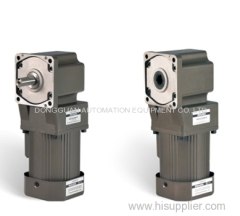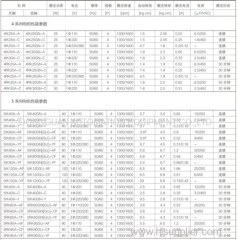Induction motors are widely used for automation.
Their simple construction
and long life have earned them a place in a extensive variety of applications to
power or drive industrial and business machines.
There are broad range of
models available for use with or without gear reducers.
These motors are
rated for continuous duty and are reversible.
- A small induction motor
usually means the condenser - run induction motor. This motor always uses both
auxiliary winding and condenser not only when starting but also during
operation. Generally, its starting torque isn&'t great, but its structure is
simple reliable and efficient. Refer to.
- The motor can be
used in continuous rated operations.
- The number of rated rotation of the
motor varies depending on the load imposed on it.
- It is suitable for
operations that do not require the speed control.
- Its insulation class is
E. SPG&'s UL conformance motor is class A.
- There are two types. One is
a condenser-run single-phaseinduction motor and the other is a three-phase
induction motor.
- Since the single-phase motor is a condenser-run induction
motor, it provides high efficiency and low noise.
- The power source for a
single motor includes A(110V 60Hz), B(220V 60Hz), C(100V 50/60Hz), D(200V
50/60Hz), E(115V 60Hz), and X(220-240V 50Hz).
- For a single-phase induction
motor, make sure that the condenser complies with the capacity of the
motor.
- For a single-phase induction motor, reversing the direction of the
rotation within a short time during operation is not possible due to adverse
exerting of the inertia torque against reversing. Thus, stop the motor first and
change the rotational direction next.
- As an induction motor is driven by a
three-phase power source, the three-phase motor provides high efficiency,
relatively great starting torque, and high reliability. The threephase motor is
popular as a general-purpose motor.
- The power source for a three-phase
motor, an induction motor, includes U(200V 50/60Hz), T(220V50/60Hz), and
S(380-440V 50/60Hz).







